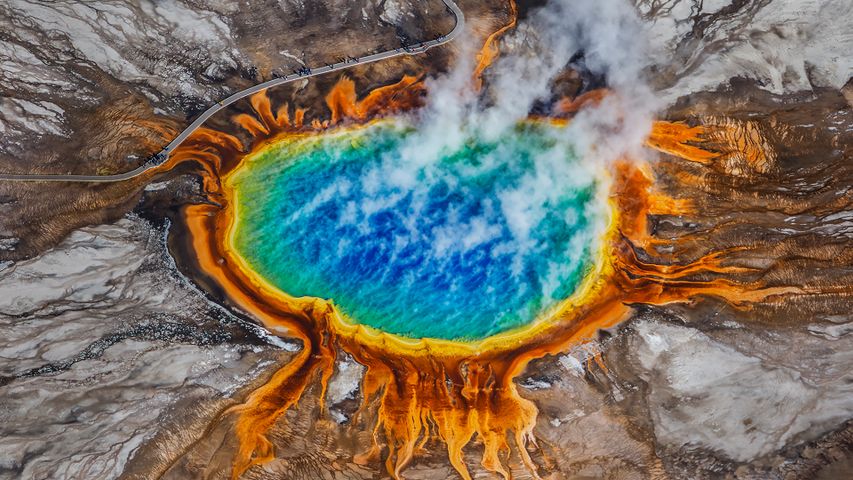Mineral-laden water in the Rio Tinto in Minas de Rio Tinto mining area, Huelva province, Andalusia, Spain
© David Santiago Garcia/Getty Image
Reflecting on one of the world’s strangest rivers
If you like your landscapes on the surreal side, then this weird and wonderful river in the Andalusia region of southwestern Spain should be to your liking. The Rio Tinto (Red River) gets its name from the reddish hue of its water, which contains high levels of iron and sulfur, making it very acidic. This unusual chemical makeup may or may not be a result of the area's long history of mining, which dates back at least 5,000 years. Ancient residents like the Tartessians and Romans dug for copper, silver, gold, as well as the mineral pyrite, commonly referred to as 'fool's gold.' Legend has it that Rio Tinto was the site of the fabled mines of King Solomon.
Because of its extreme acidity, the river and surrounding areas are not only colorful, but also quite different than any other in Spain, with a scarcity of normal plant life in and along the riverbeds. Only a thriving community of unusual microorganisms—classified as extremophiles—can survive the water's acidic mix, by feeding on the minerals alone. The strangeness of Rio Tinto's ecology has even attracted the attention of NASA, which studied the bacteria that have adapted to this highly acidic environment because the conditions resemble those on the surface of Mars.
Related Images
Bing Today Images



 Bottle cap mural by Oscar Olivares in Guatire, Venezuela
Bottle cap mural by Oscar Olivares in Guatire, Venezuela
 Mona Vale Rockpool, Sydney, Australia
Mona Vale Rockpool, Sydney, Australia
 'The Spirit of Electricity' by Raoul Dufy, Museum of Modern Art, Paris, France
'The Spirit of Electricity' by Raoul Dufy, Museum of Modern Art, Paris, France
 A delta in the Venetian Lagoon, Italy
A delta in the Venetian Lagoon, Italy
 Grand Prismatic Spring, Yellowstone National Park, Wyoming, United States
Grand Prismatic Spring, Yellowstone National Park, Wyoming, United States
 Lathmar Holi in Nandgaon and Barsana, Uttar Pradesh
Lathmar Holi in Nandgaon and Barsana, Uttar Pradesh
 Desert bighorn sheep in Valley of Fire State Park, Nevada, United States
Desert bighorn sheep in Valley of Fire State Park, Nevada, United States
 Eucalyptus trees, Megalong Valley, Blue Mountains National Park, NSW, Australia
Eucalyptus trees, Megalong Valley, Blue Mountains National Park, NSW, Australia



